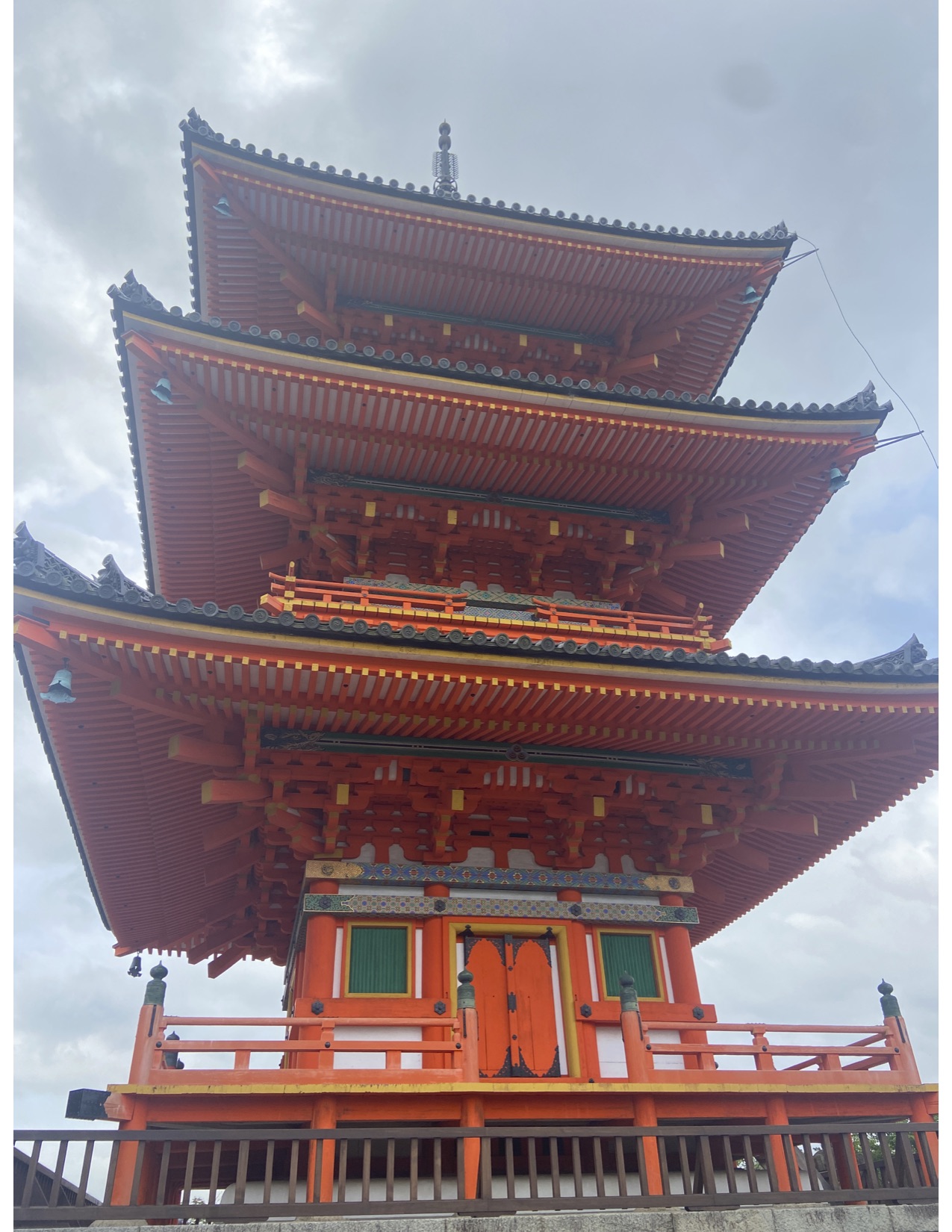
An ornate pagoda at Kiyomizudera Temple
The SJMC Japan team wrapped up day six with a visit to Kiyomizudera Temple, Yasaka Shrine and the geisha district of Gion. This jam-packed day left students tired but excited to document their adventures. A few students, allured by the idea of geishas, made plans to head out again after completing their work.
The group was introduced to our new guide, John Wells, who has lived in Japan for the past 30 years. He explained to everyone that the area surrounding Kiyomizudera was his old neighborhood, and he and his friends often would celebrate New Year’s Eve at the temple.
A prize at the top of the hill
Kiyomizudera, deemed the “pure water temple,” is a popular attraction for locals and tourists alike. It was established decades before the city of Kyoto itself, and hermit monks occupied the temple and set up meditation shacks nearby. Fires from war and lightning have destroyed it many times, causing it to be rebuilt several times.
After making the uphill hike to Kiyomizudera, students were greeted by a gate that is said to be one of the oldest structures that has been rebuilt. Once inside, we were stunned by the bright orange pagodas that surrounded us and the looming forest behind. The three-leveled buildings house sacred statues that are rarely seen by the public. Their bright orange color is meant to ward off bad spirits.
One activity we experienced at the temple is the Zuigudo Hall. This is a pitch-black tunnel dedicated to Buddha’s mother and is meant to symbolize the journey through the womb. The light at the end represents being born again. For 100 yen per person, each student removed their shoes and made the brave decision to descend into the tunnel with only a handrail to guide them. Many of the students had compelling reactions to this activity.
“A couple of people, including myself, started hallucinating people around us,” Allison Binkley said. “It was difficult to stay calm in complete darkness, but it was a fascinating experience.”
Some felt this experience brought the group closer.
“It was so cool to have an interactive experience, and going through the tunnel together was so fun,” Felicity Guajardo said.
Kiyomizudera was first founded when Kyoto was not yet a big city. Settlements with temples were scattered throughout the land. These temples were the frontier because monks lived in the wilderness for practice, and populations developed around them. The fauna surrounding these temples is truly breathtaking.
“[It’s] ethereal being surrounded by all [the] green,” Maya Hicks said. “It makes the spiritual energy even stronger … being away from the city.”
Geisha a-go-go
John also took us to Kyoto’s geisha district, Gion. Here, the group learned about the rigorous training geishas must go through to earn their geiko title. Some of the students were able to catch only a glimpse of some geishas, although John reassured us that if we returned at night, we would have a much better chance.
Upon returning to the hotel, many students opted to complete homework in their free time. However, many still have Gion on their minds and plan to see the city come alive at night.
“I’m interested in seeing what the nightlife is like here,” Allison said. “I’d love to see a kabuki show and some geishas.”
The best downhill hike
In between visiting the temple and Gion, the group made the descent back to the base of the hill but not before visiting all of the shops on the way down. We were each gifted a delicious matcha ice cream by our Asia Institute guide, Jennifer Norris, before we split up into small groups to explore the Higashiyama District.
Brianna Archer “bought a lot of stuff, like a Godzilla fan and an engraved bracelet,” while Maya said she will be taking home a traditional silk kimono and some jewelry. Oli De Los Santos was proud to purchase a Japanese robe as well, and said, “I think it’s the most beautiful thing I have ever owned.”
Others purchased gifts with their friends and family in mind.
“One of the stores I went to sold authentic Japanese dishes, and I bought one with a chokin plate with Kiyomizu Temple for my grandmother,” Felicity said. “She travels a bunch, and I want to give her this in hope that she can go one day.” Chokin are gilded plates collected around the world.
While some students shopped their way down the hill, others opted for a taste of home with a Japanese twist.
“I went to Starbucks to do some work,” Allison said. While the name may be familiar, the menu featured some items we can’t get at home – even their coffee blends are different than what you’d find in the U.S.
Still, others snagged lunch at quaint restaurants, such as Nishiki-an, which served pasta and rice dishes.
“[My rice pilaf] was sick nasty,” Brianna said. While that may sound like she disliked it, it’s actually a glowing review.
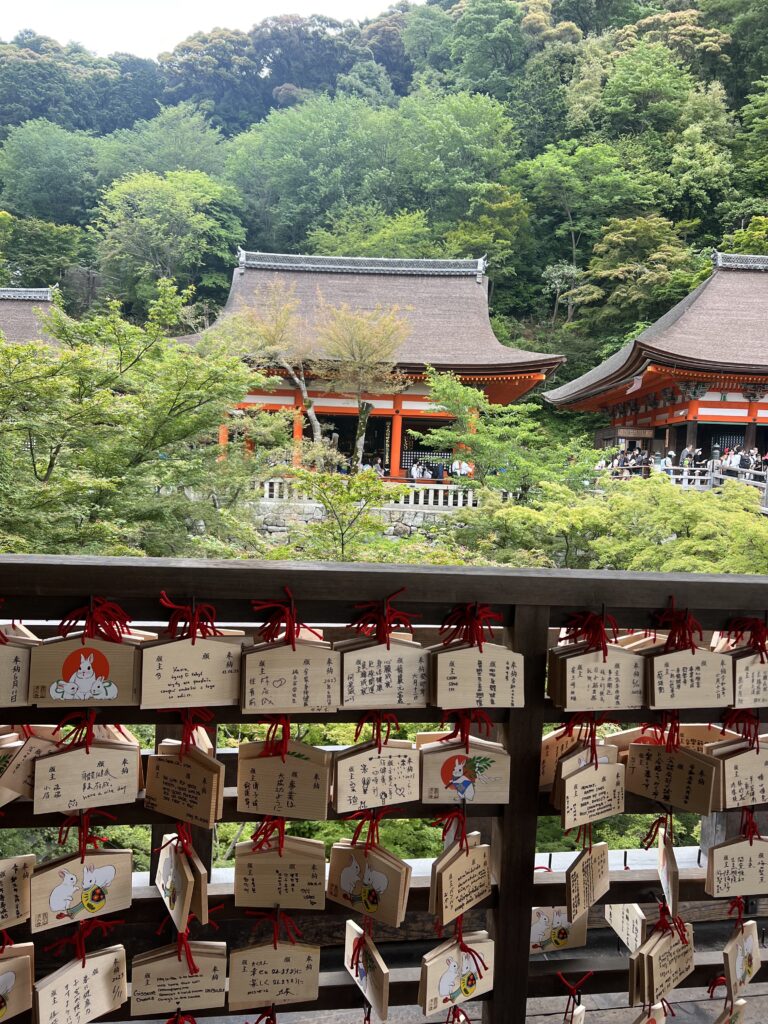
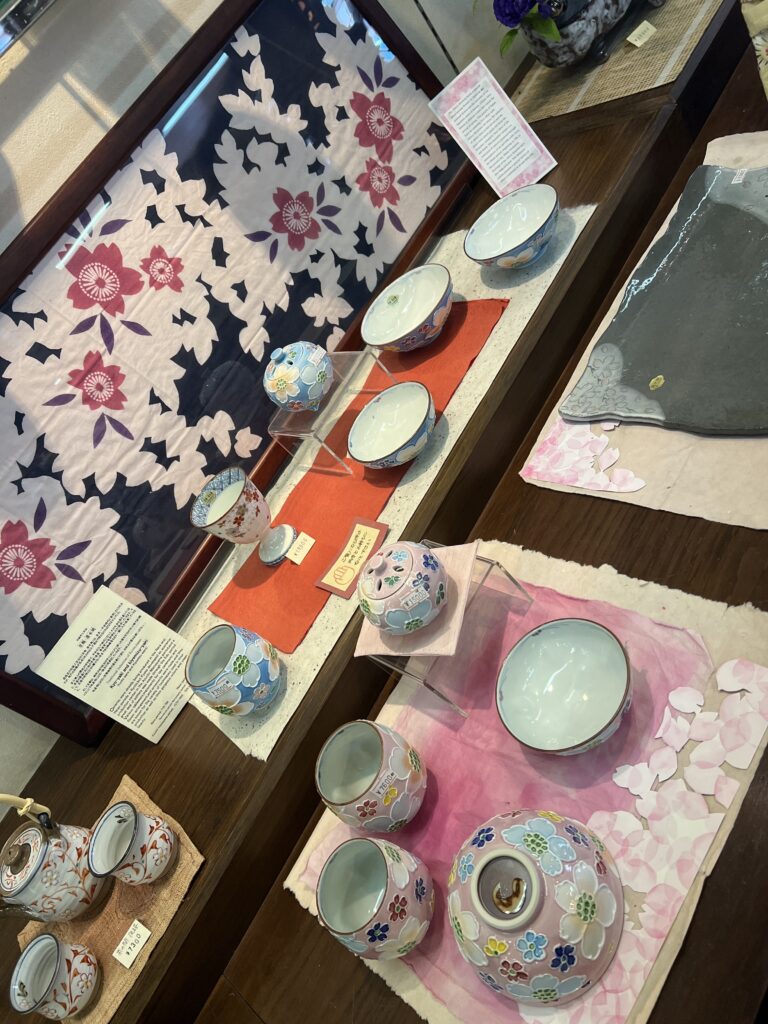
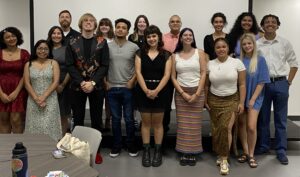
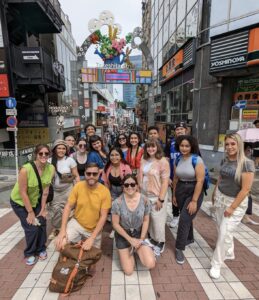






What an incredible article on your Kyoto adventure, I felt as though I was traveling with you. Memories for you and your classmates for a lifetime.